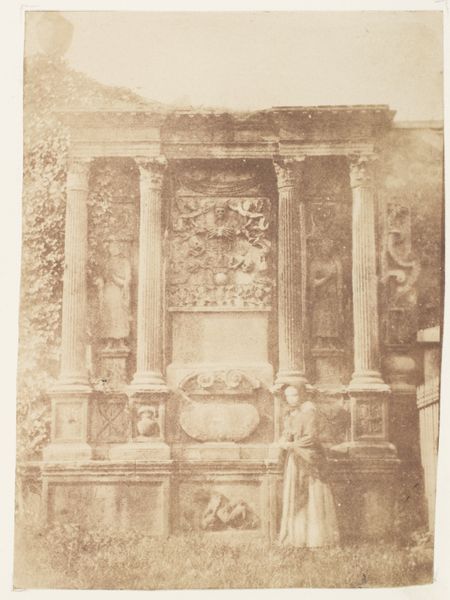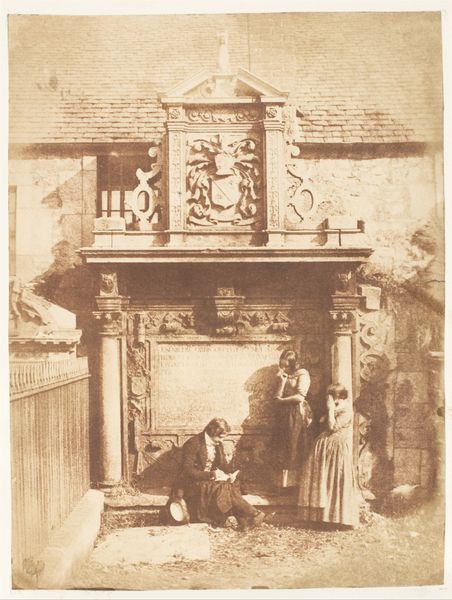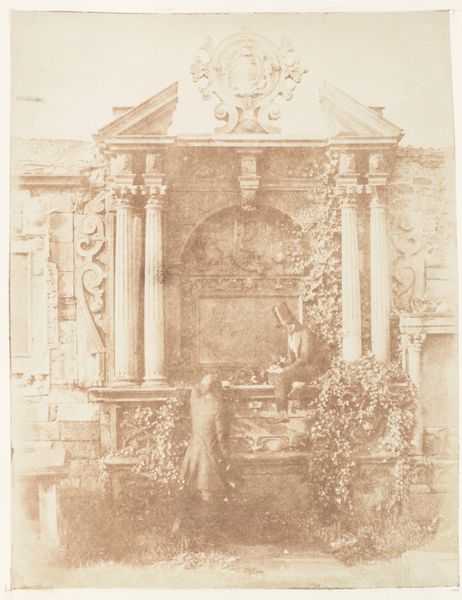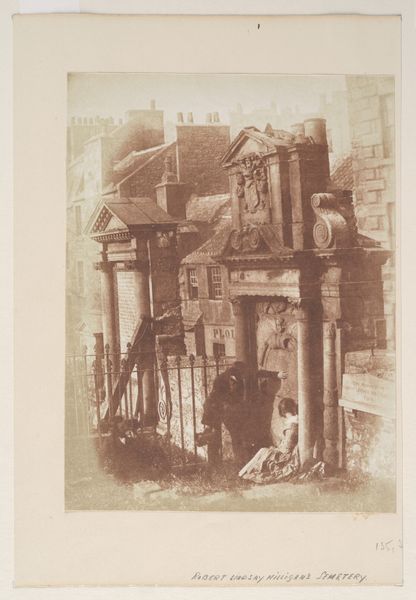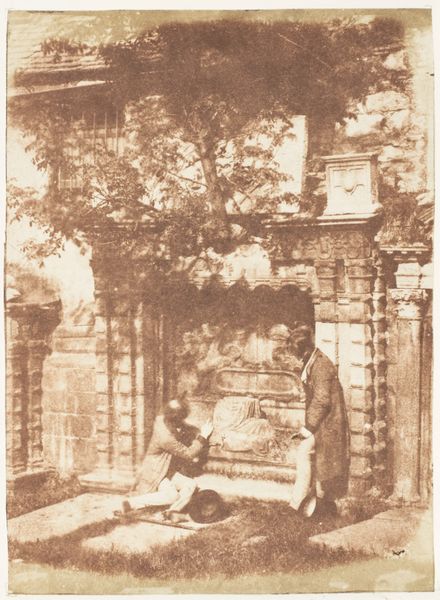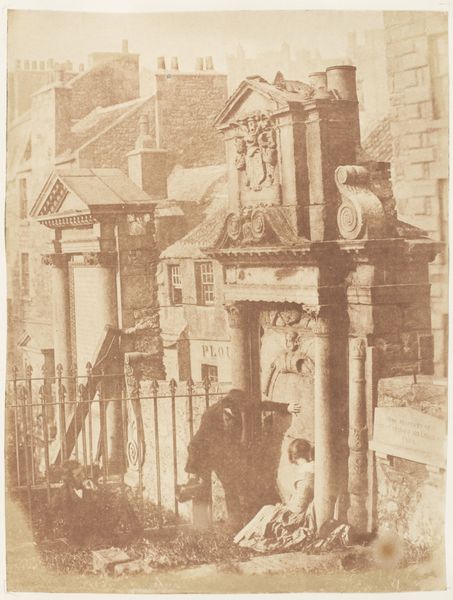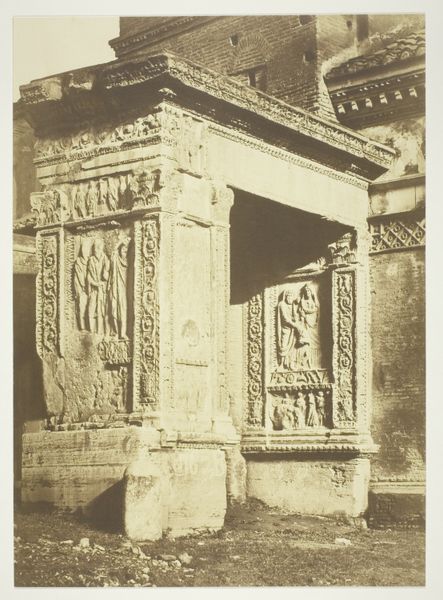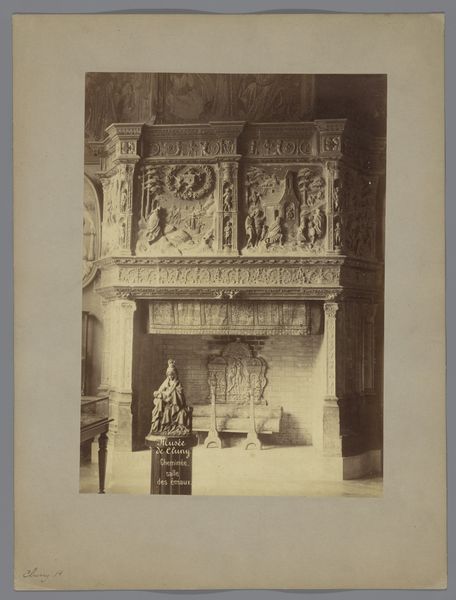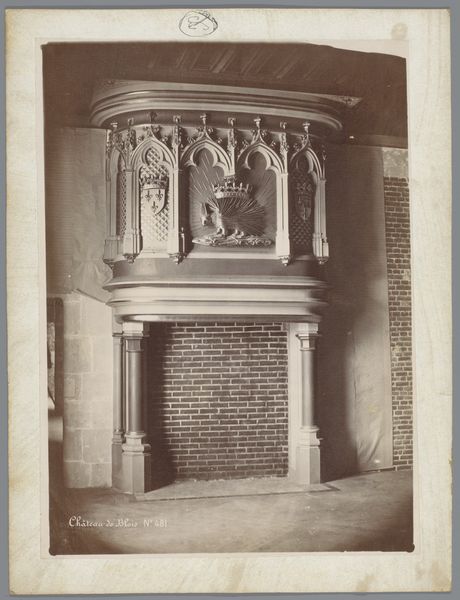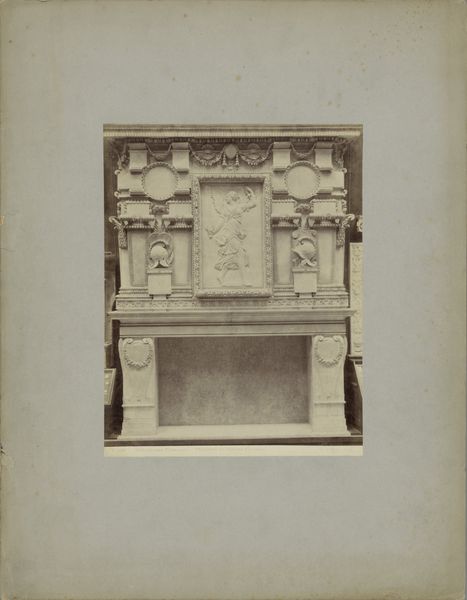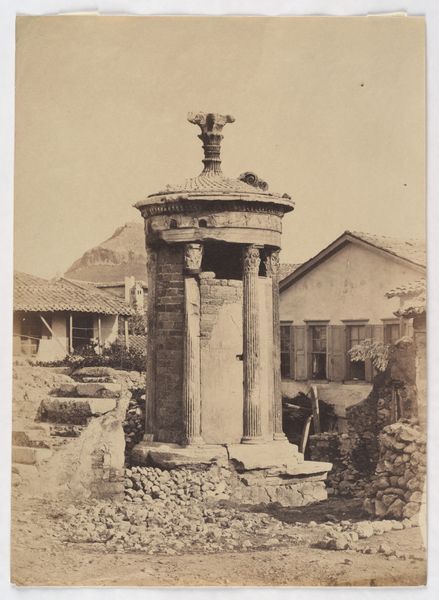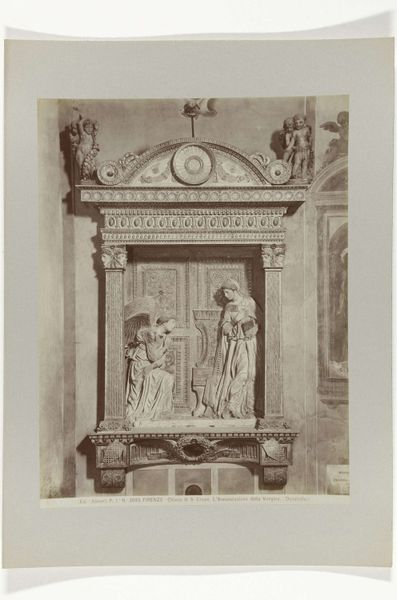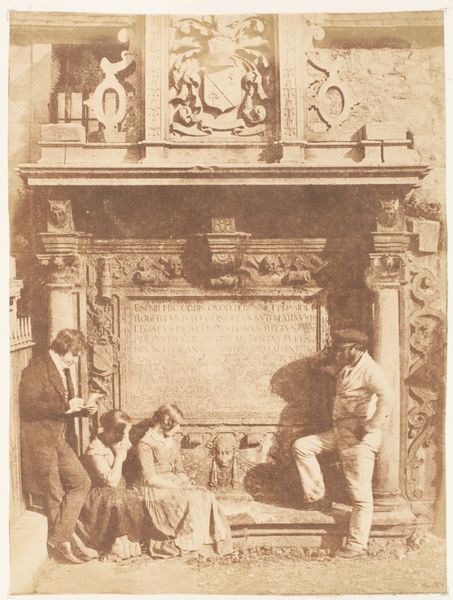
architecture
#
toned paper
#
photo restoration
#
pencil sketch
#
old engraving style
#
charcoal art
#
arch
#
19th century
#
men
#
watercolour illustration
#
natural palette
#
pencil art
#
watercolor
#
architecture
Copyright: Public Domain
Curator: This is "Edinburgh. Greyfriar's Churchyard," a calotype created by David Hill and Robert Adamson between 1843 and 1847. It resides now at The Metropolitan Museum of Art. Editor: What strikes me immediately is the overwhelming sepia tone – a kind of melancholic stillness seems to emanate from the image, enhanced by the soft focus. Curator: Indeed. The calotype process itself, utilizing paper negatives, lent itself to such impressions. The material constraints, longer exposure times, fostered a particular aesthetic, moving away from sharp detail to favor tonal range. Editor: And you see how this medium inherently democratizes artmaking? These are not painters with years of academic training; they are experimenting with a technology that opens new modes of representation, capturing working class people amongst such detailed craftsmanship. Curator: Precisely! The availability of materials and their manipulation become key. Note how the worn texture of the stone monument becomes almost as central as the figures posed before it. Labor, in a way, is visible both in the construction of the architecture and the production of the image. The craft, essentially. Editor: But the choice of Greyfriar's – a location steeped in history, a burial ground, suggests a more critical reading, too. Who is being memorialized here? Whose stories are told, and whose are forgotten within these walls, within this frame? We have to consider Scotland's broader historical and colonial narratives as well. Curator: That is quite astute, since the textural elements of stone, and the sepia tones may be symbolic themselves. The monument acts almost as a ready made studio setting in this photographic endeavor. The visual properties were just as paramount in this context as historical commentary. Editor: I would say those details allow the narrative complexity to speak clearly now. It asks us to engage with memory, loss, and perhaps even the unequal distribution of social worth. Curator: I agree. It makes this photograph such an engaging piece to consider even today! Editor: It does make me feel more reflective as I move on, acknowledging these varied pasts now.
Comments
No comments
Be the first to comment and join the conversation on the ultimate creative platform.
